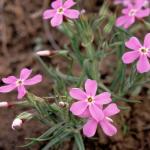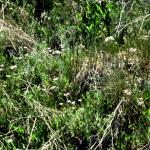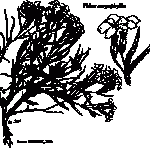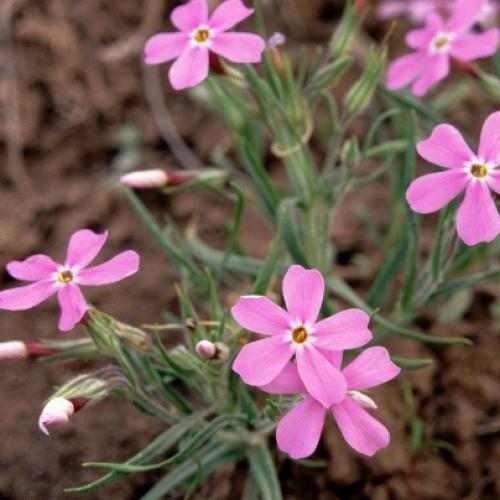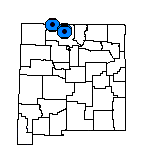Phlox caryophylla (Pagosa Phlox)
Family
POLEMONIACEAE
Synonyms
NONE
Common Name
Pagosa Phlox
| USFWS | State of NM | USFS | BLM | Navajo Nation | State Rank | Global Rank | R-E-D Code | NMRPTC Status | Strategy Status |
|---|---|---|---|---|---|---|---|---|---|
| S2 | G3 | 1-2-1 | R | SS |
| Overall Conservation Status | Documented Threats | Actions Needed |
|---|---|---|
| UNDER CONSERVED | Road maintenance and development |
Status surveys on abundance, distribution and threats |
Description
Perennial; stems from a woody base, up to 20 cm long, soft-hairy; leaves narrow, not exceeding 3 mm wide and 50 mm long; flowers in loose clusters, bright pink to purple; corolla tube about 15 mm long, the lobes 6-10 mm long, 4-6 mm wide; calyx-lobes edged with flat (not keeled), colorless, transluscent membranes. Flowers May to July.
Similar Species
Phlox caryophylla does not have glandular pubescence and the hyaline membranes between the calyx-lobes are not keeled. Phlox longifolia does have glandular pubescence and the hyaline membranes between the calyx-lobes are keeled.
Distribution
New Mexico, Rio Arriba County; adjacent Colorado, La Plata and Archuleta counties.
Habitat
Open woodlands, slopes, and sagebrush communities, often in deep soils; 2,000-2,300 m (6,500-7,500 ft).
Remarks
The relationship between Phlox caryophylla and P. longifolia needs clarification. Some plants in north-central Rio Arriba County appear to be hybrids.
Conservation Considerations
Phlox carophylla occasionally grows in highway rights-of-way and may be impacted by maintenance operations. Otherwise, it does not appear to be threatened by present prevailing land uses.
Important Literature
*New Mexico Native Plants Protection Advisory Committee. 1984. A handbook of rare and endemic plants of New Mexico. University of New Mexico Press, Albuquerque.
Wherry, E. 1944. New phloxes from the Rocky Mountains and neighboring regions. Notulae Naturae of the Academy of Natural Sciences of Philadelphia 146:1-11.
Wherry, E. 1955. The genus Phlox. Morris Arboretum Monographs 3:1-174.
Information Compiled By
Ken Heil, Joey Herring 1999
For distribution maps and more information, visit Natural Heritage New Mexico

